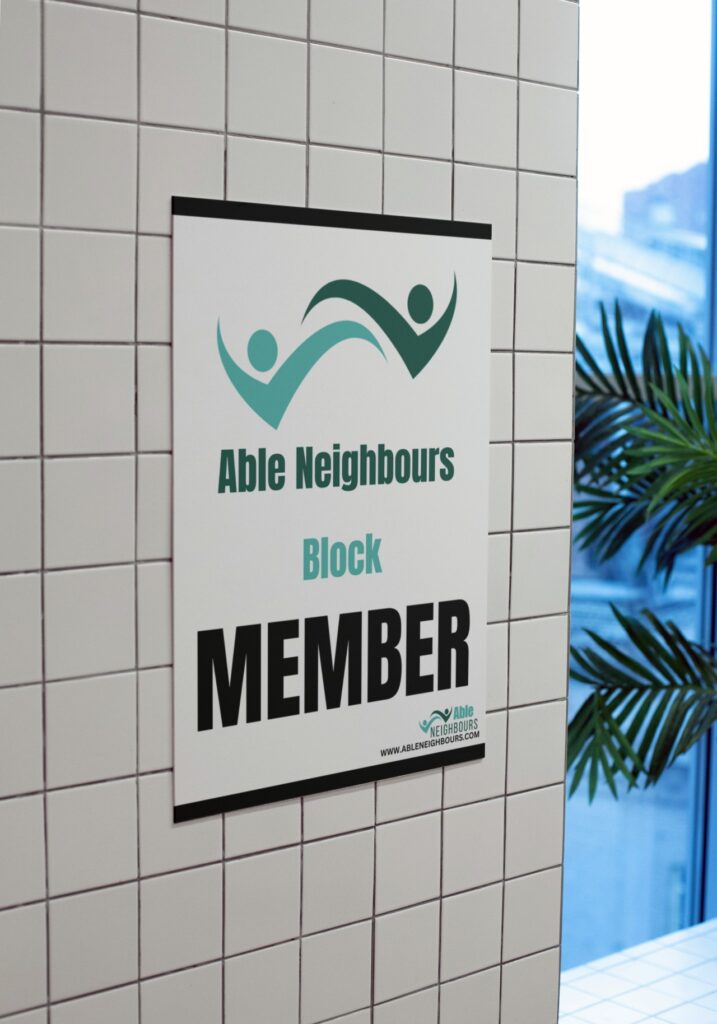
Organizing a Block Volunteer Team
In times of crisis, where electronic communication isn’t an option, organizing a block-by-block volunteer team to share information and urgent notices can be challenging yet manageable with careful planning. Drawing inspiration from historical events of WWI and WWII, when computer hacking was not a concern, we can see the value in pre-computer age methods of communication.
By reintroducing and implementing these proven strategies from the past, a volunteer team can effectively share information and provide assistance using only paper and in-person contact. This approach ensures continuous communication even in a grid-down situation where power, cell phones, and computers are unavailable. Additionally, it better protects people by eliminating the need to share personal identity-based information online.
1. Designate Block Leads
- Selection: Block/Building/Floor Leads have the option to self-designate in the event that there is no apparent lead as of yet. Additionally, a block lead can appoint a secondary Block/Building/Floor Lead if there are too few members to hold a vote. Once three additional neighbors join, a vote can be conducted to affirm the initial leader’s placement, thereby establishing their authority for initiating community involvement on the Block/Building/Floor till such time a vote may be called for whatever reason deemed just by three separate residences. The initial block lead agrees to respectfully abide by any vote as part of his or her commitment to the Able Neighbour cause.
- All teaching is to be self-taught using the information provided on the site.
2. Establish a Central Meeting Point
- Location: The home of the captain will serve as the central emergency meeting location.
- Schedule: Set regular times for meetings, such as daily briefings.
3. Message Delivery
- Delivery: All notices and newsletters will be hand delivered.
- Updates: Ensure block leads update newsletters regularly with the latest information.
4. Message Relay System
- Runners: Emergency message relays are to be executed by any capable bodies.
- Routes: Establish clear routes and times for runners to collect and deliver messages.
5. Written Notices
- Templates: Prepare templates for common types of notices (urgent alerts, informational updates, resource requests).
- Distribution: Block leads or runners distribute these notices door-to-door as needed.
6. General Community Emergency Response Plan (GCERP)
- Pairing: Pair neighbors so they can check on each other and share information quickly.
- Responsibility: Ensure each pair understands their responsibility to relay information promptly.
7. Community Drills
- Practice: Conduct regular drills to practice the communication plan.
- Feedback: Collect feedback after drills to improve the system.
8. Printed Maps and Directories
- Maps: Distribute printed maps of the neighbourhood highlighting key locations (e.g., central meeting points, bulletin boards).
- Directories: Provide a directory of block leads and other key volunteers, including their addresses and any other relevant contact information.
9. Regular Community Meetings
- Forum: Hold regular meetings where community members can discuss issues, share information, and stay updated on the crisis situation.

Member Identification Placards
Displaying the Able Neighbours block lead and member identification placard in your front window or on your property is essential. This visible marker helps members easily recognize each other, fostering communication and support. By promoting a sense of belonging, these placards create a welcoming environment where AN members can look out for one another during emergencies and crises.
Skills to Become a Volunteer

First Aid
Volunteering as a first aid responder allows individuals to provide immediate assistance and support to those in need, potentially mitigating injuries and promoting recovery.

CPR
Offering to administer CPR can be crucial in emergencies, potentially saving lives through immediate and vital assistance.

Nurses
Being volunteer nurse allows for the application of professional skills to directly impact communities in need, providing essential healthcare services and fostering wellness.

Firefighters
Volunteering as a firefighter involves risking personal safety to protect lives and property, responding to emergencies with courage and dedication.

Plumbers
As a plumber, volunteering entails using skills to repair essential infrastructure, ensuring communities have access to safe and reliable water and sanitation services.

Electricians
As an electrician, volunteering involves applying technical expertise to enhance safety and reliability of electrical systems, benefiting communities with essential power infrastructure support.

Carpenters
Being a carpenter, volunteering means utilizing craftsmanship to construct and repair structures, contributing to community development and improvement projects.

Mechanics
Volunteering as a mechanic involves leveraging automotive expertise to maintain and repair vehicles, ensuring reliable transportation for individuals and organizations in need.

Cooks
Volunteering as a cook involves preparing nutritious meals with care and creativity, nourishing communities and fostering a sense of togetherness through food.

Child Care
Volunteering as a child care provider entails offering nurturing and safe environments for children, supporting their growth and development through compassionate care.

Elder Care
As a senior care provider, offering companionship and assistance to elderly individuals enhances their quality of life, promoting dignity and well-being in their golden years.

Pet Care
Providing pet care as a volunteer involves ensuring the well-being and happiness of animals through attentive and compassionate support, enriching their lives and promoting responsible pet ownership.

Search & Rescue
As a search and rescue operator, navigating challenging terrains and situations to locate and aid missing individuals brings crucial assistance and relief to families and communities in distress.

Heavy Lifting
As a heavy lifter volunteer, assisting with physical tasks and lifting heavy objects supports community projects and ensures smooth operations in various endeavors.

Language Translator
Volunteering as a language translator involves bridging communication gaps, facilitating understanding and inclusivity across diverse communities.

Crime Watch
Volunteering to be a neighbourhood crime watcher involves vigilantly monitoring and reporting suspicious activities, fostering a safer environment for residents.

Apply to be an Able Neighbours Volunteer!
Take the first step in your neighbourhood!
Welcome to Able Neighbours! We’re excited to have you here. Whether you’re volunteering or interested in leading a team, we’ve got everything you need to get started. Just click the link below to view and download the organizer files. Thanks for helping build a stronger community!

